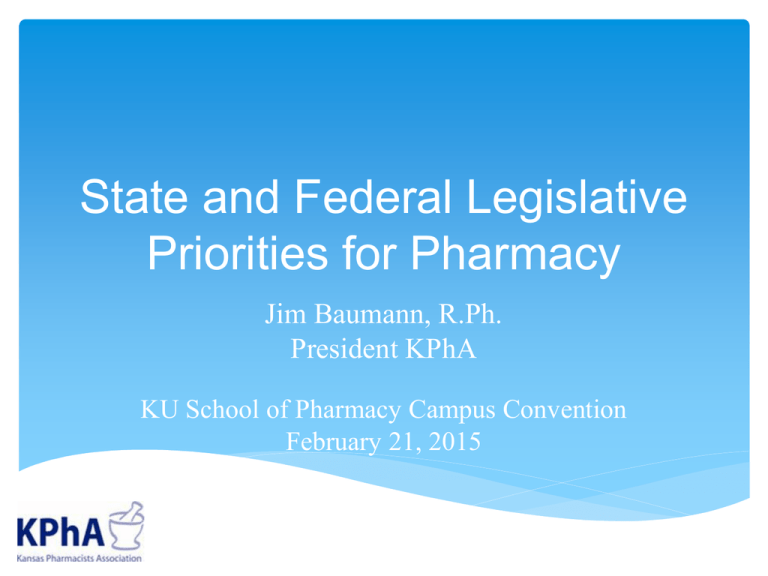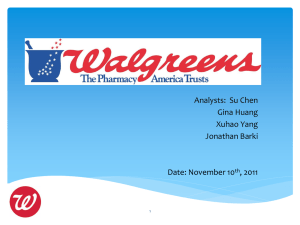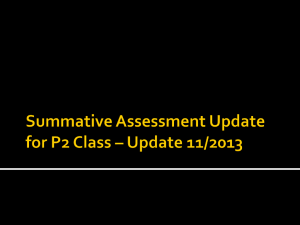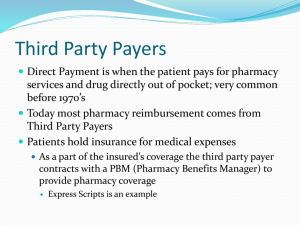
State and Federal Legislative
Priorities for Pharmacy
Jim Baumann, R.Ph.
President KPhA
KU School of Pharmacy Campus Convention
February 21, 2015
Why should you be in interested in
Legislation that involves Pharmacy
IMPACT!
The way you practice
The way you are paid and reimbursed
The way you can interact with patients
The way you run your business
The way you are taxed and regulated
National Legislative Priorities
Provider Status H.R. 592
amends Title XVIII of the Social Security Act to enable
patient access to, and coverage for, Medicare Part B
services by state-licensed pharmacists in medically
underserved communities. The bill would recognize
pharmacists as healthcare providers.
National Legislative Priorities
Any Willing Pharmacy H.R. 793
Allowing Medicare Part D seniors to obtain medications from
any pharmacy without penalty of higher co-pays
Eliminate “preferred pharmacy” networks especially in
underserved rural areas.
National Legislative Priorities
Medicare Prescription Drug Price Negotiations Act SB
31
Authorizes secretary HHS to negotiate drug prices with
manufacturers including rebates, discounts, and other price
concessions. HHS will not be authorized to establish formulary
or prevent plan sponsors to obtain additional discounts from
manufacturers. Secretary would report to congress every 6
months on negotiation to achieve lower prices.
National Legislative Priorities
Medicare Part D PBM MAC Transparency Act H.R. 244
Requires PDP cannot enter into a contract with PBM
without certain criteria
Prevents patient from being forced or incentivized to use a
pharmacy that is owned by a PBM (retail, specialty, mail
order) and that personal information cannot be transmitted
from PBM to their entitites unless patient has authroized.
Requires MAC pricing to be updated every 7 days and
disclosure on sources used to update price.
State of Kansas Legislative
Priorities
MedSync
MAC Transparency
Others
Medicaid Expansion
Medicaid Medication Reimbursement
Medicaid Mental Health PDL
Fiduciary Responsibilities of PBM’s with State Employee
Health Plan
MAC Transparency SB 103
MAC Transparency Talking Points
The bottom line: Pharmacies should know that they are going to be reimbursed for at
least the cost of the medications they sell.
Most health insurance plans, including Medicare and Medicaid, use pharmacy
benefits managers (PBMs), which act as middlemen to handle payments for
prescription medications.
Pharmacies must contract with PBMs in order to stay in business, which gives the
PBMs considerable market power.
Those contracts stipulate that pharmacies will be paid for generic medications using a
strategy known as "MAC pricing" — for maximum allowable cost. The problem is
that MAC pricing is usually confusing and opaque.
Each PBM's MAC pricing list is different. Most consider their lists trade secrets and
refuse to disclose them to insurance companies or pharmacies — that includes the
drugs on the lists, their prices, how they're determined, or how often they change.
When it comes to private insurance plans, no one but the PBMs know the drugs or
prices on the lists, how they're determined, or how often they change.
The structure of the contract isn't negotiable; if a pharmacy wants access to the
patients in a particular network, it must sign the contract.
PBMs frequently audit pharmacies and use technicalities to refuse to reimburse them
for expenses.
Issues with MAC Transparency
Despite all this, pharmacies must enter into these one-sided
contracts, not knowing how much they will be paid for any
given drug on any given day. Pharmacies don't know if their
reimbursement will even cover the cost of the medication.
By deciding which medications they will cover and how
much they will pay, PBMs can effectively decide what
medications are affordable for consumers to take and for
pharmacies to carry.
This risks making medication unavailable to patients,
especially in Kansas's smaller and rural communities, where
there are a limited number of pharmacies.
MAC Transparency SB 103
What we’re asking for:
We aren't asking PBMs to open their books or reveal their secrets. What we want is
some predictability in pricing.
Our legislation would...
Require PBMs to update their price lists every seven days, so they remain in
line with actual wholesale costs.
Require PBM contracts to be clear about how MAC pricing is calculated.
Give authority to the Kansas Insurance Commissioner to oversee and enforce
PBM contracts.
Require PBMs to document that the drugs on their MAC pricing lists are
actually available at the low price for which they are willing to reimburse
pharmacies.
MAC pricing transparency is not only fair and reasonable, it will benefit Kansas
communities by keeping medication available to patients, and by keeping local
pharmacies in business.
Med Sync HB 2176
Medication Synchronization Talking Points
A major driver of rising health care expenditures is the cost associated with treating chronic illnesses. For
many of these chronic illnesses, medications are the most cost-effective treatment, and yet patients routinely
miss doses. Medication synchronization is increasingly being recognized as a tool that can improve
adherence when patients are on a regular chronic medication regimen. It refers to the process of a pharmacy
coordinating all of a patient’s chronic prescription medications to be filled on the same date each month.
Many patients fail to refill a prescription, or stop taking medications without consulting a health care
professional.
Poor medication adherence leads to more frequent hospitalizations, poorer health, higher healthcare costs
(up to $290 billion per year), and increased risk of death.
Pharmacists facilitate a critical role to ensuring proper and timely use of medications and medication
adherence.
An emerging opportunity for pharmacists to help increase proper medication use and increase adherence,
while improving pharmacy efficiency, is medication synchronization.
Medication Synchronization can streamline prescription refills for pharmacists, providers, and patients
allowing patients to fill all of their medications on the same day each month.
Medication Synchronization also improves patient safety. Many people with chronic health problems and
the elderly have mobility issues that limit their trips to the pharmacy.
By filling all of their prescriptions at the same time each month, it makes it more convenient for them to
pick up their medicine and reduces the risk they will go off their medications because they have run out.
Barrier to Med Sync
There are several barriers to medication synchronization.
When attempting to synchronize a patient’s medications,
some prescriptions are deemed “refill too soon” by the insurer
or third party. Some insurers allow only 1 claim per 30 day
period, making it difficult to synchronize medications.
Another issue is that patients are often charged a full month’s
co pay for just a partial fill to synchronize their medications.
Several states are addressing these issues with legislation.
Connecticut passed legislation in 2013, and over 10 other
states have active legislation, including Missouri.
Med Sync HB 2176
What we’re asking for:
Our legislation would...
Allow for a prorated daily cost-sharing right to prescriptions that are
dispensed for less than a 30 day supply when it is in the best interest
of the patient.
Prohibit denial of such coverage or prorated dispensing fees
Give authority to the Kansas Insurance Commissioner to oversee
and enforce this statute.
Medication synchronization increases medication adherence and
will benefit Kansas patients by keeping required medications more
easily accessible to patients
Medicaid Bills
Medicaid Expansion
Follow Federal Guidelines according ACA
Medicaid Medication Reimbursement
Change reimbursement formula and dispensing fee
Medicaid Mental Health PDL
Allow Mental Health Medications to be managed by PDL and
DUR process
Medicaid Delay New Drugs for Formulary Access
Change access for new drugs from immediately until reviewed
by PDL to 6 months non approved and then reviewed
State of Kansas Board of
Pharmacy Priorities & Changes
Dave Schoech, R.Ph.
Chair, Kansas Board of Pharmacy
Regulation vs. Statute
Regulation
Statute
A regulation is a direction
adopted by the executive branch
(governor) which has the
binding effect of law and then
empowers a particular
department (board of Pharmacy)
to make regulations to
implement the intent of the
general law.
A statute is a law passed by the
legislative body such as a
congress (house and senate &
signed by governor)
Changes and amendments in
statutes require the legislature to
vote and pass new or revised
law.
Kansas Board of Pharmacy
Collaborative Practice
Technician Certification
Practice of Pharmacy
KSA 65-1626a (b) (1) ‘‘Practice of pharmacy’’ means the interpretation and evaluation
of prescription orders; the compounding, dispensing and labeling of drugs and devices
pursuant to prescription orders; the administering of vaccine pursuant to a vaccination
protocol; the participation in drug selection according to state law and participation in
drug utilization reviews; the proper and safe storage of prescription drugs and
prescription devices and the maintenance of proper records thereof in accordance with
law; consultation with patients and other health care practitioners about the safe and
effective use of prescription drugs and prescription devices; performance of
collaborative drug therapy management pursuant to a written collaborative practice
agreement with one or more physicians who have an established physician-patient
relationship; and participation in the offering or performing of those acts, services,
operations or transactions necessary in the conduct, operation, management and
control of a pharmacy.
18
New Language
performance of collaborative drug
therapy management pursuant to a written
collaborative practice agreement with one
or more physicians who have an
established physician-patient relationship
19
KSA 65-1626a (b)(2)
(2) ‘‘Collaborative drug therapy management’’ means a practice of pharmacy
where a pharmacist performs certain pharmaceutical-related patient care
functions for a specific patient which have been delegated to the pharmacist
by a physician through a collaborative practice agreement. A physician who
enters into a collaborative practice agreement is responsible for the care of
the patient following initial diagnosis and assessment and for the direction
and supervision of the pharmacist throughout the collaborative drug therapy
management process. Nothing in this subsection shall be construed to permit
a pharmacist to alter a physician’s orders or directions, diagnose or treat any
disease, independently prescribe drugs or independently practice medicine
and surgery.
20
KSA 65-1626a (b)(3)
(3) ‘‘Collaborative practice agreement’’ means a written agreement or
protocol between one or more pharmacists and one or more physicians
that provides for collaborative drug therapy management. Such collaborative practice agreement shall contain certain specified conditions or
limitations pursuant to the collaborating physician’s order, standing
order, delegation or protocol.
A collaborative practice agreement shall be: (A) Consistent with the
normal and customary specialty, competence and lawful practice of the
physician; and (B) appropriate to the pharmacist’s training and
experience.
21
KSA 65-1626a (b)(4)
(4) ‘‘Physician’’ means a person licensed to practice
medicine and surgery in this state.
22
New Statute KSA 65-1677
(a) Not later than 90 days after the effective date of this act, the
state board of pharmacy and the state board of healing arts shall
appoint a seven-member committee to be known as the
collaborative drug therapy management advisory committee for
the purpose of promoting consistent regulation and to enhance
coordination among such boards with jurisdiction over licensees
involved in collaborative drug therapy management. Such
committee shall advise and make recommendations to the state
board of pharmacy and state board of healing arts on matters
relating to collaborative drug therapy management.
23
Collaborative Drug Therapy
Management Advisory Committee
One member of the board of pharmacy appointed by the
board of pharmacy, who shall serve as the nonvoting
chairperson; (2) three licensed pharmacists appointed by
the state board of pharmacy, at least two of whom shall
have experience in collaborative drug therapy
management; and (3) three persons licensed to practice
medicine and surgery appointed by the state board of
healing arts, at least two of whom shall have experience in
collaborative drug therapy management.
24
Pharmacy Technicians
(a)…Every person registered as a pharmacy technician shall pass an
examination one or more examinations identified and approved by the
board within 30 days of the period or periods of time specified by the
board after becoming registered. The board shall adopt rules and
regulations identifying the required examinations, when they must be
passed and establishing the criteria for the required examination
examinations and a passing score scores. The board may include as a
required examination any national pharmacy technician certification
examination.
Expands Board of Pharmacy authority pertaining to pharmacy
technician registration.
25
Questions?








